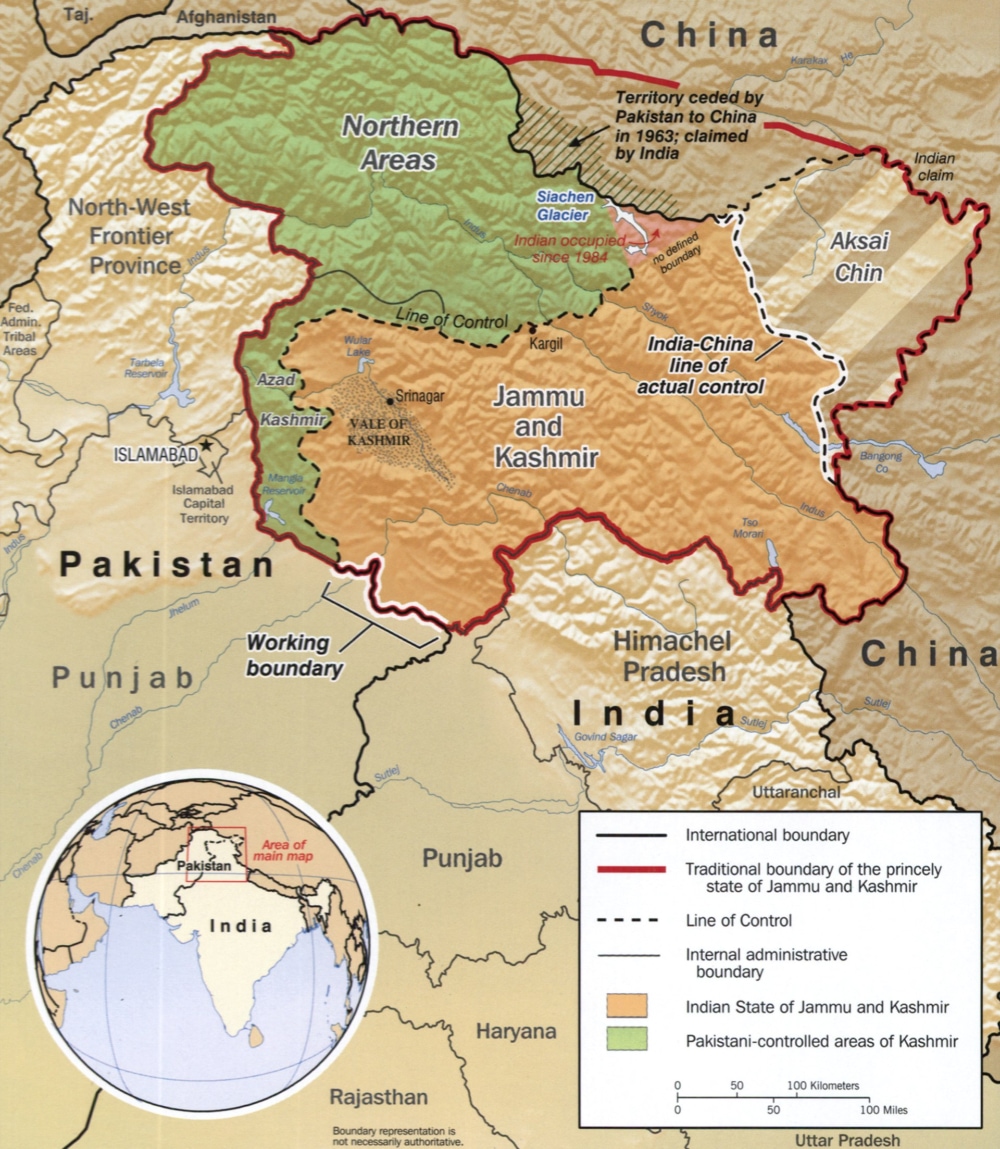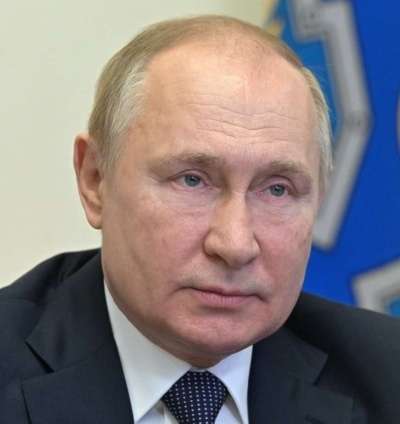In an era of escalating global tensions, one of the most alarming flashpoints lies in South Asia—where two nuclear-armed rivals, India and Pakistan, maintain a perilous balance forged through decades of enmity.

Indian Prime Minister Narendra Modi (left) and Pakistani Prime Minister Shehbaz Sharif. Public domain
Should that balance collapse, unleashing nuclear fire in the skies over the subcontinent, the world could be thrust into chaos in an instant. A conflict between India and Pakistan would send shockwaves far beyond their borders.
For Vladimir Putin’s Russia, such a catastrophe could become the perfect justification to break its own nuclear taboo.
With Europe already gripped by the crisis in Ukraine, a simultaneous nuclear conflict in Asia would make the Cold War’s worst nightmare—global nuclear war—a terrifyingly real possibility.
The Powder Keg of South Asia: India-Pakistan Tensions

Map of Kashmir. The red border indicates the former princely state of Jammu and Kashmir. Green is Pakistan-administered territory, orange is Indian-administered, striped area is Chinese-controlled, and brown is territory ceded to China by Pakistan in 1963. Public domain
Since their separation in 1947, India and Pakistan have clashed repeatedly—primarily over the Kashmir dispute, a long-standing territorial conflict centered on a Muslim-majority region claimed by both countries.
Both nations are nuclear powers. As of 2025, India is estimated to possess around 160 nuclear warheads, while Pakistan has approximately 170.
Their military doctrines have increasingly embraced concepts like preemptive strikes and limited nuclear use. Pakistan’s tactical nukes and India’s “Cold Start” strategy raise the risk that even a minor clash could spiral into nuclear war.
Indeed, in April 2025, a deadly shooting attack on tourists in Indian-administered Kashmir triggered retaliatory strikes by India on militant positions in Pakistan. The two sides briefly engaged in military exchanges, but reached a ceasefire within four days.
Analysts believe both governments sought to project strength domestically while avoiding full-scale war.
However, if such skirmishes were to spiral out of control and lead to nuclear weapons use, the consequences would be catastrophic. Millions could be killed or injured in urban nuclear strikes, with radiation spreading across borders. Economic paralysis, refugee waves, and food crises could engulf all of South Asia.
And the danger doesn’t end there.
A nuclear war in this region would shatter the international taboo on nuclear use—setting a deadly precedent that such weapons are now “viable options” in future conflicts.
Putin’s Calculus: Lowering the Nuclear Threshold

President Vladimir Putin. Public domain
Amid the Ukraine war, Russian President Vladimir Putin has repeatedly brandished nuclear threats, positioning them as a “last resort.”
Since 2022, Russia has bolstered its tactical nuclear arsenal, transferred nukes to Belarus, and accelerated hypersonic missile development. Many interpret Putin’s actions as a deliberate lowering of the nuclear threshold.
If nuclear war were to erupt in South Asia, the global landscape would change drastically.
While the world reels from the India-Pakistan disaster, the moral and political barriers to nuclear use may weaken. In this window, Putin could seize the moment—justifying his own nuclear strike as a defense of Russia’s national interests.
For instance, if NATO increases its military aid to Ukraine, Russia might attempt a limited tactical nuclear strike as a deterrent.
Russia’s military doctrine already permits nuclear use in existential crises—and a nuclear South Asian war would provide just the crisis Putin needs.
The European Domino: Global Fallout

NATO member states. Source: wiki, c Janitoalevic, Patrick Neil
Europe is already on edge over Russia’s aggression. While NATO nations continue to support Ukraine, they do so with increasing anxiety about nuclear escalation.
If South Asia descends into nuclear conflict and Russia exploits that moment to use tactical nukes, NATO would face an unprecedented dilemma: retaliate and risk full-scale nuclear war, or stand down and embolden further Russian aggression.
Border states like Poland and the Baltics are especially vulnerable.
Meanwhile, a chain reaction of nuclear panic could engulf Europe.
Citizens would fear radiation and food shortages. Markets would plummet. Far-right and anti-NATO factions could gain strength, threatening the unity of the European alliance.
Nuclear-armed European nations such as Britain and France might bolster their deterrence strategies, but that in turn risks fueling a further arms race.
What Must Be Done
A nuclear war in South Asia is not a local affair.
It is a potential trigger for global nuclear escalation—offering leaders like Putin the justification they need to press the red button, and pushing Europe to the brink of disaster.
The international community must act decisively to de-escalate tensions between India and Pakistan.
Diplomatic pressure, economic leverage, and enhanced military dialogue—all must be employed to prevent the first flash of nuclear light.
Otherwise, we all may face a future consumed by nuclear fire.


